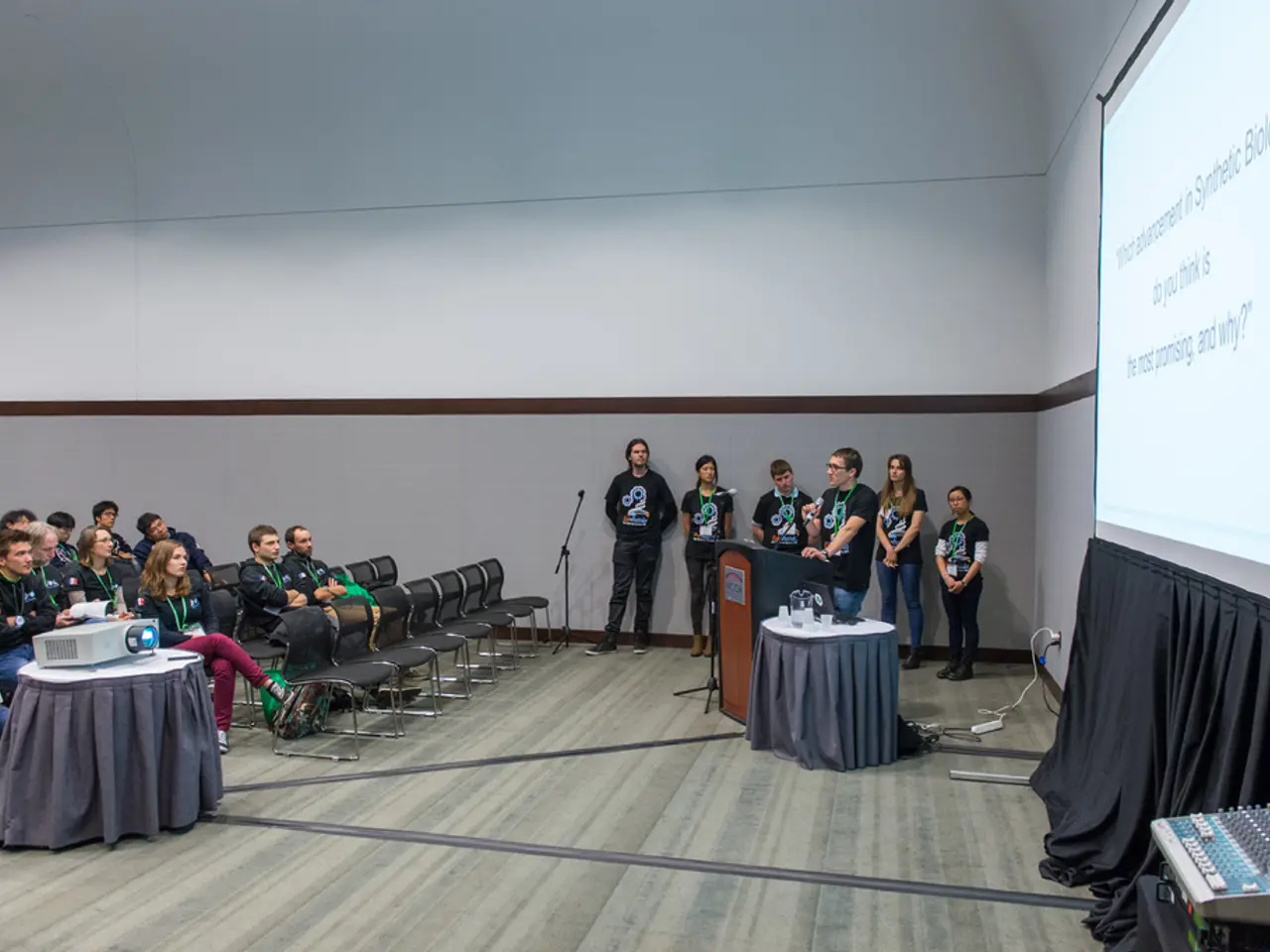Expanding Medical Cooperation Through Audiovisual Technology
Modernizing AV Technology in Healthcare for Enhanced MDT Meetings
In the realm of healthcare, dependable AV systems play a pivotal role in facilitating effective communication, patient care, and accurate diagnosis. To ensure reliability, ease of use, and high-quality visuals, a strategic approach is necessary.
One key aspect of this modernization is the integration of advanced AV systems. These systems, designed to support seamless clinical collaboration, include high-resolution video conferencing, large-format displays, and intuitive control interfaces. By supporting diverse clinical data types, these technologies foster richer discussions and accurate decision-making [1].
Simplicity and automation are also paramount. Streamlined user interfaces and automation reduce setup time and minimize technical disruptions during MDT meetings, enabling clinicians to focus on patient care rather than technology management [1].
High-quality imaging capabilities are crucial, with AV systems supporting detailed visualization of clinical images such as pathology slides, endoscopy videos, and radiology scans. This supports precise diagnosis and treatment planning in real time [2][5].
Robust network infrastructure and security are essential to ensure reliable connection and patient data privacy during virtual or hybrid MDT meetings [1][3]. Digital workflow integration, including tools that enable sharing and annotating clinical images and documents within the MDT, enhances communication and consensus building across specialties [5].
Support for hybrid meeting models, combining in-person and remote participants effectively, is also important. AV setups that balance audio/video clarity and interaction are critical for broad multidisciplinary involvement [3].
High-quality displays and DICOM-compliant images are crucial in MDT settings for both in-room and remote participants. However, systems optimized for widescreen (16:9) may distort portrait-oriented X-rays, making it difficult to identify subtle clinical details.
Everything in AV technology should aim to improve patient care, whether by enabling better outcomes, reducing delays, or decreasing stress. Warranty and replacement support are critical to prevent disruption to care in case of faulty equipment.
Interoperable devices, like Cisco's support for Microsoft Teams Rooms, are helping to bridge the gap in fragmented AV systems. Fragmentation remains a barrier to effective collaboration, with different sites using different AV systems. By modernizing ageing video conferencing systems, with a growing shift toward Microsoft Teams Rooms, many NHS Trusts are addressing this issue [4].
Simplicity and intuitive controls are important for AV systems, allowing them to fade into the background and let clinical teams focus on their work. One-touch join, self-help options, and consistent interfaces across rooms are essential for AV systems in shared hospital rooms, regardless of the technical background of users [4].
AV technology, when working well, empowers clinicians, supports teams, and helps patients receive timely, high-quality care. Trusted manufacturers and integrators that provide preventative maintenance and dedicated support are crucial for dependable AV systems in healthcare [4].
In conclusion, modernizing AV technology in healthcare for MDT meetings can lead to faster, more accurate clinical decision-making and treatment planning, leveraging technology to bring specialists together effectively [1][3][5].
- Advanced AV systems, featuring high-resolution video conferencing, large-format displays, and intuitive control interfaces, can greatly support seamless clinical collaboration during multidisciplinary team (MDT) meetings.
- By integrating digital workflow solutions that enable sharing and annotating clinical images and documents within the MDT, these technologies can facilitate communication and consensus building across specialties.
- To ensure seamless collaboration in various health-and-wellness contexts, such as fitness-and-exercise and science events, modern AV systems should be designed to support hybrid meeting models and display DICOM-compliant images clearly on displays optimized for both landscape and portrait orientations.




